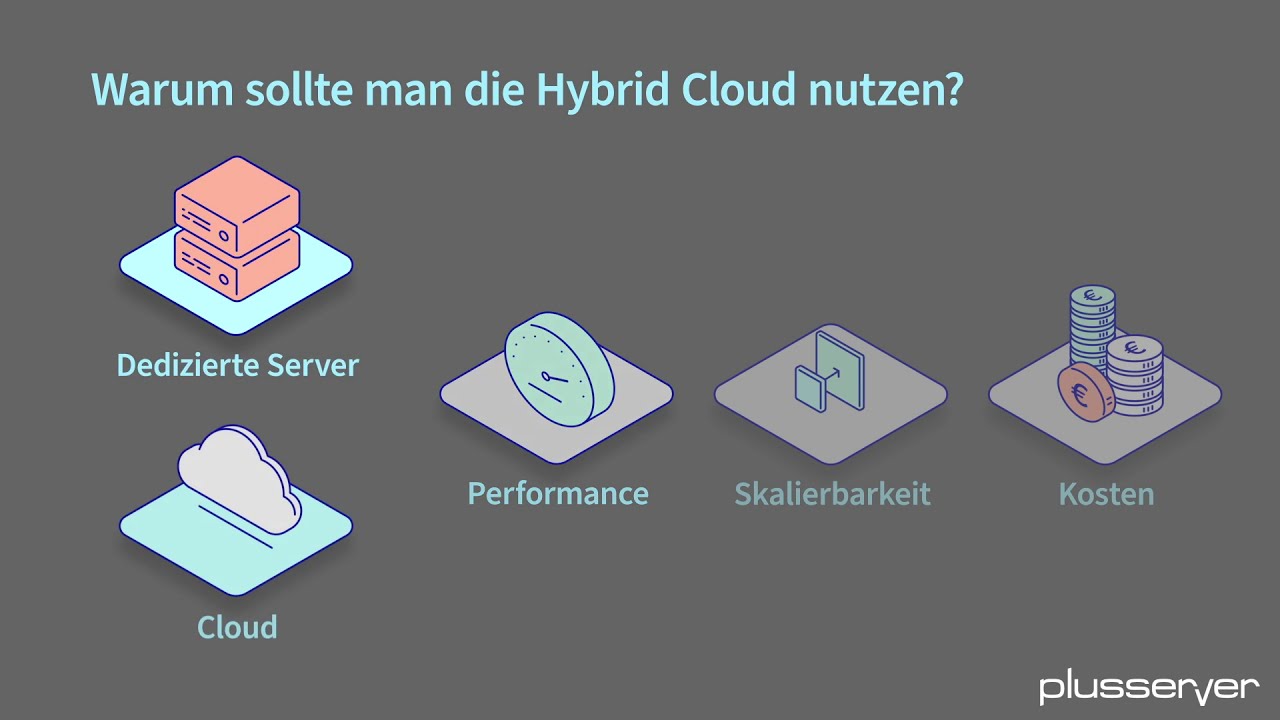In today’s world, cloud computing has become an essential part of businesses, and the hybrid cloud has emerged as a popular choice for organizations. A hybrid cloud refers to a combination of public and private clouds that work together to provide various benefits to businesses. However, managing a hybrid cloud can be challenging, but with the help of a hybrid cloud management platform, you can simplify your cloud management and provide a seamless experience to your customers. In this article, we will discuss everything you need to know about the hybrid cloud management platform.
What is a Hybrid Cloud Management Platform?
A hybrid cloud management platform is an integrated tool that allows businesses to manage their hybrid cloud infrastructure from a single console. It provides a unified interface for managing resources, monitoring performance, and optimizing costs. With a hybrid cloud management platform, you can easily deploy and manage applications across multiple clouds, automate tasks, and ensure compliance with security policies. It also helps businesses to improve their operational efficiency by reducing manual efforts and streamlining processes.
When do You Need a Hybrid Cloud Management Platform?
If you are using a hybrid cloud infrastructure, managing it can be complex and time-consuming. A hybrid cloud management platform can help you in the following scenarios:
The intent of Cloud Paks is to supply a pre-configured, containerized and examined answer that's licensed by IBM. This strategy is supposed to eradicate lots of the unknowns in deploying workloads within the cloud. Whereas we expect it is a nice strategy to simplification, there's nonetheless a major quantity of customization that must be made for every occasion of the answer that can be distinctive to a person group’s wants. As such, a good portion of the Cloud Pak deployment should be customized applied by IBM providers. That in and of itself isn't essentially an issue, however it does imply that this isn't a easy “off the shelf” answer that may be applied simply by inside IT staffs in most organizations.
- If you have a multi-cloud environment and managing it from different consoles is becoming a challenge.
- If you want to avoid vendor lock-in and want to use different cloud providers for different workloads.
- If you want to improve your operational efficiency and reduce manual efforts in managing your cloud infrastructure.
- If you want to ensure compliance with security policies and regulatory requirements.
- If you want to optimize your cloud costs and make informed decisions based on usage and performance data.
How to Choose the Right Hybrid Cloud Management Platform?
Choosing the right hybrid cloud management platform is crucial for the success of your business. Here are some factors that you should consider while choosing a platform:
After years of shifting functions to the general public cloud, enterprises understand it’s not the proper match for each app and are pulling a few of them again to personal clouds, forcing the companies to undertake a hybrid technique. Nevertheless it’s not a straightforward course of and one which will require formal coaching and certifications for the IT professionals tasked with this essential transition.
- Compatibility: The platform should be compatible with your existing cloud infrastructure and support multiple cloud providers.
- Automation: The platform should provide automation capabilities to reduce manual efforts and improve operational efficiency.
- Security: The platform should have robust security features to ensure compliance with security policies and regulatory requirements.
- Scalability: The platform should be scalable to support your growing business needs.
- Cost Optimization: The platform should provide insights into your cloud usage and costs to help you make informed decisions.
Pros and Cons of Hybrid Cloud Management Platform
Like any other technology, hybrid cloud management platforms have their pros and cons. Let’s discuss them in detail:
Pros:
- Centralized Management: A hybrid cloud management platform provides centralized management capabilities that simplify the management of multi-cloud environments.
- Improved Operational Efficiency: The platform provides automation capabilities that reduce manual efforts and improve operational efficiency.
- Scalability: The platform is scalable to support the growing needs of your business.
- Cost Optimization: The platform provides insights into your cloud usage and costs, helping you optimize your cloud spending.
- Security: The platform has robust security features to ensure compliance with security policies and regulatory requirements.
Cons:
- Complexity: Managing a hybrid cloud infrastructure can be complex, and using a management platform may add to the complexity.
- Cost: Implementing a hybrid cloud management platform involves additional costs, such as licensing fees and training costs.
- Dependency: Using a single management platform may create dependency, and if the platform fails, it may affect your entire hybrid cloud infrastructure.
Alternatives to Hybrid Cloud Management Platform
If you don’t want to use a hybrid cloud management platform, you can consider the following alternatives:
Automation is a key driver in Ceridian's general cloud imaginative and prescient and technique. "It is actually the muse and the basic step that is required as an entry for us to have the ability to show out our idea," says Alan Segal, Ceridian's senior vp of enterprise know-how. "It is important within the sense that we're driving towards push-button solutioning."
Automation permits groups to concentrate on significant jobs as a substitute of on routine, repetitive duties. Whereas getting crew members onboard with automation requires a while and convincing, Segal says he has encountered little opposition to the know-how. "Getting groups to actually settle for and perceive the worth and the profit...hasn't been a big problem," he says.
Automation helped Ceridian deal with modifications that the COVID-19 pandemic dropped at its operations, for instance. "The power to handle your whole operation remotely from wherever you might be, as a result of you do not have to fret about your campus, is an important step," Perlman says. Due to its automation instruments, Ceridian was in a position to transition, nearly instantly, to 100% distant operation. "There was no downtime, and no impression to our clients as a result of we ready," he says.
- Manage your cloud infrastructure manually: This option requires significant manual effort and may not be suitable for large-scale deployments.
- Use cloud-native tools: Cloud providers offer various cloud-native tools that can help you manage your cloud infrastructure. However, using multiple tools can create management challenges.
- Use third-party tools: Several third-party tools are available in the market that can help you manage your hybrid cloud infrastructure. However, these tools may not provide a unified interface for managing multi-cloud environments.
Step-by-Step Guide to Using a Hybrid Cloud Management Platform
Here’s a step-by-step guide to using a hybrid cloud management platform:
- Choose the right platform that meets your business needs and requirements.
- Install and configure the platform according to the vendor’s instructions.
- Connect your cloud providers to the platform and configure the settings.
- Deploy your applications on the hybrid cloud infrastructure using the platform.
- Monitor the performance of your applications and infrastructure using the platform’s monitoring capabilities.
- Optimize your cloud costs by analyzing your usage and performance data.
Comparison of Top Hybrid Cloud Management Platforms
Several hybrid cloud management platforms are available in the market. Here’s a comparison of some popular platforms:
| Platform |
Compatibility |
Automation |
Security |
Scalability |
Cost Optimization |
| IBM Cloud Pak for Multic oud Manager |
Supports multiple cloud providers |
Provides automation capabilities using AI and ML |
Has robust security features |
Scalable to support enterprise-level deployments |
Provides cost optimization insights based on usage data |
| VMware vRealize Suite |
Supports multiple cloud providers |
Provides automation capabilities using AI and ML |
Has robust security features |
Scalable to support enterprise-level deployments |
Provides cost optimization insights based on usage data |
| HPE OneSphere |
Supports multiple cloud providers |
Provides automation capabilities using AI and ML |
Has robust security features |
Scalable to support enterprise-level deployments |
Provides cost optimization insights based on usage data |
| Microsoft Azure Arc |
Supports multiple cloud providers |
Provides automation capabilities using AI and ML |
Has robust security features |
Scalable to support enterprise-level deployments |
Provides cost optimization insights based on usage data |
FAQs
Q1. What is a hybrid cloud management platform?
A1. A hybrid cloud management platform is an integrated tool that allows businesses to manage their hybrid cloud infrastructure from a single console.
Q2. When do you need a hybrid cloud management platform?
A2. You need a hybrid cloud management platform if you have a multi-cloud environment, want to avoid vendor lock-in, want to improve your operational efficiency, want to ensure compliance with security policies and regulatory requirements, and want to optimize your cloud costs.
Q3. How to choose the right hybrid cloud management platform?
A3. You should consider factors such as compatibility, automation, security, scalability, and cost optimization while choosing a hybrid cloud management platform.
Q4. What are the pros and cons of a hybrid cloud management platform?
A4. The pros of a hybrid cloud management platform include centralized management, improved operational efficiency, scalability, cost optimization, and security. The cons include complexity, cost, and dependency.
Q5. What are the alternatives to a hybrid cloud management platform?
A5. The alternatives to a hybrid cloud management platform include managing your cloud infrastructure manually, using cloud-native tools provided by cloud providers, and using third-party tools.
Conclusion
In conclusion, managing a hybrid cloud infrastructure can be complex, but with the help of a hybrid cloud management platform, businesses can simplify their cloud management and provide a seamless experience to their customers. By choosing the right platform, businesses can improve their operational efficiency, ensure compliance with security policies and regulatory requirements, and optimize their cloud costs. While there are pros and cons to a hybrid cloud management platform, businesses can also consider alternatives such as managing their cloud infrastructure manually or using cloud-native or third-party tools. Overall, a hybrid cloud management platform is an essential tool for businesses looking to reap the benefits of a hybrid cloud infrastructure.




